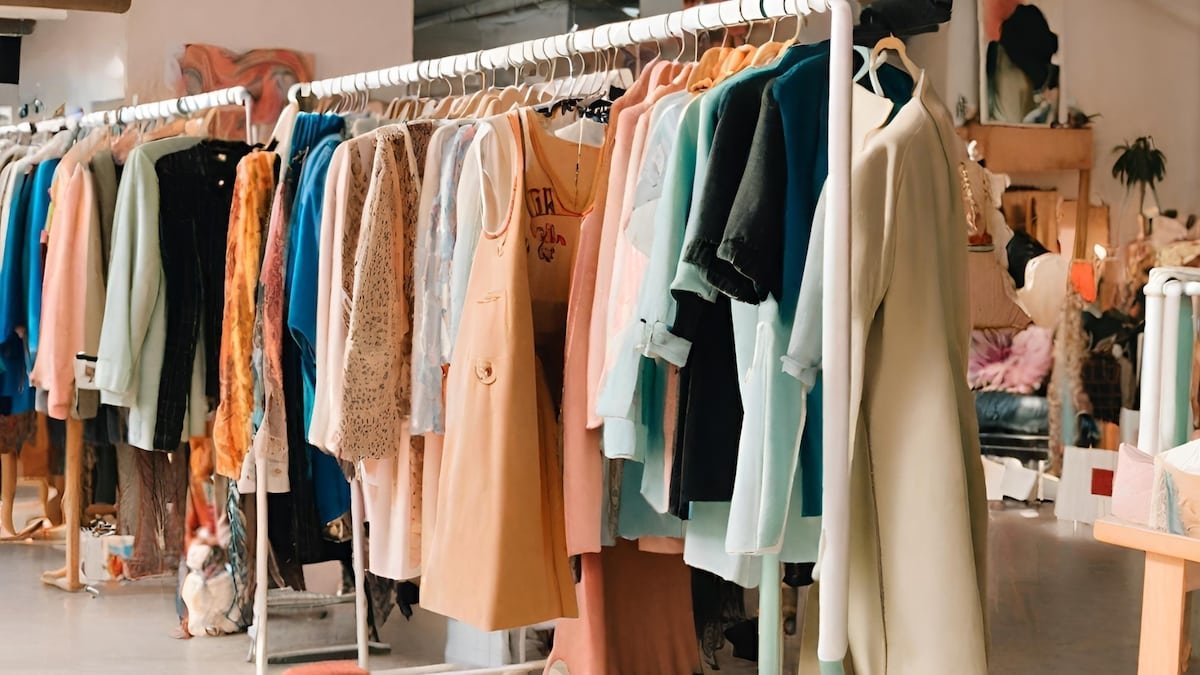What Is Thrifting?
In June 2018, I committed to quitting fast fashion.
However, most sustainable fashion brands were out of my price range and I need another way to fill in closet gaps. So, I learned to thrift!
While it took me a few years to get the hang of it, I now exclusively buy clothes secondhand. If you're ready to learn more about this eco-friendly and budget-conscious way of shopping, here's Thrifting 101: everything you need to know about buying preloved clothes.
First off, What Is A Thrift Shop and What Is Thrifting?
A thrift shop/consignment shop is "a store selling secondhand clothes and other household goods, typically to raise funds for a charitable institution" (google).
"Thrifting" therefore refers to the act of shopping at such stores.
So if someone says that they're "going thrifting," it basically means that they're going shopping (at a secondhand shop).
Why Do People Thrift?
Thrifting is a sustainable and budget-friendly way to shop new-to-you clothes! It gives you the opportunity to find unique garments for your wardrobe while saving money. Not to mention, it’s great for the environment, benefits local businesses, and forces you to slow down the rapid consumption of new clothes.
How Does Thrifting Help The Environment?
Well, we all know how bad fast fashion is for the environment at this point but in case you forgot, here are some quick stats:
Nearly three-fifths of all clothing produced ends up in incinerators or landfills (McKinsey)
More than 8 percent of global greenhouse-gas emissions are produced by the apparel and footwear industries (Qantis)
Around 20 to 25 percent of globally produced chemical compounds are utilized in the textile-finishing industry (Yusuf)
Secondhand shopping reduces waste. It extends the lifetime on existing garments and therefore conserves resources and reduces pollution.
Part of why our fashion fashion problem is so bad is because we're simply cycling through our clothes too quickly. If we slow down and wear our clothes more (or wear other people's clothes more), we can extend the time between production and landfill and therefore help the environment out.
Ready To Do Better? Start With A Beginner's Guide To Sustainable Fashion
Why Is Thrifting Bad?
The most obvious concern with thrifting is cleanliness. Although it's common courtesy to wash what you donate beforehand, a lot of people actually skip that step. Therefore, some of the donated clothes and textiles are dirty and could contain a lot of bacteria or even bed bugs.
Another major criticism is that thrifting culture has changed. Consignment shops used to be a place where people could buy affordable clothes. But now, after the influence of Tiktok "thrift hauls" and DIY upcycle videos, the prices have gone up and now people who need the clothes can no longer get them.
Furthermore, thrifting can be overwhelming. If you shop at large charity stores (eg. Goodwill or The Salvation Army), sorting through racks and racks of garments is a lot of work. Don’t worry though, the more you thrift, the easier it gets. I'll share some of the tips that I found helpful on my personal thrifting journey a little further down.
When Is The Best Day To Go Thrifting?
This varies from store to store and location to location but generally, it's best to go in the morning on a Monday or Tuesday. People usually do their cleaning over the weekend so secondhand shops will see an influx of new products early in the week.
Additionally, you increase your chances of finding quality goods when you go after major holidays or during spring/autumn when people are doing their closet clean-outs. Stack these on special sale days or use discounts to really get a deal.
Top Local Thrift Store Chains:
For more niche options, check out the full list over here or shop used home goods over here.
What Are Some Of Your Top Thrifting Tips?
Begin with an inventory of what you already own
Prepare a shopping list and budget
Dress in comfortable clothes and shoes
Yelp or Google the stores beforehand
Shop seasonally (or off-seasonally if you want more deals)
Shop frequently (but you don't have to buy every time)
Don't be afraid to try things on
Look out for stains
For more tips to get the most of your thrifting experience, check out this article here.
Ready to take sustainable fashion more seriously? Begin your journey here:
PIN IT FOR LATER:



